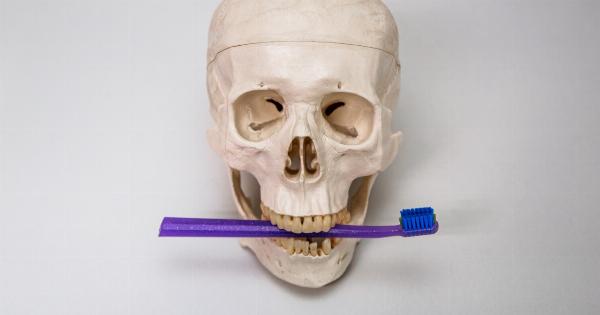Vitamin D, often referred to as the “sunshine vitamin,” plays a crucial role in maintaining various bodily functions.
It is responsible for regulating calcium and phosphate levels in the body, promoting bone health, and supporting the immune system. Unlike other essential nutrients, our bodies can produce vitamin D when exposed to sunlight. However, certain factors can lead to deficiency, making it necessary to consider vitamin D replacement therapy.
In this article, we will explore when it is time to opt for this therapy, its benefits, recommended dosage, and potential side effects.
What Causes Vitamin D Deficiency?
Several factors contribute to vitamin D deficiency. The primary cause is limited sun exposure. People who live in regions with minimal sunlight or spend a significant amount of time indoors may not produce adequate vitamin D.
Additionally, individuals who cover their skin, wear sunscreen, or live in highly polluted areas may also be at risk of deficiency.
Inadequate intake of vitamin D through diet is another factor. Foods naturally rich in vitamin D include fatty fish like salmon and mackerel, eggs, and beef liver.
However, those who follow strict vegetarian or vegan diets may struggle to obtain sufficient levels of this vitamin.
Medical conditions that affect the absorption of vitamin D in the body can also lead to deficiency.
Individuals with digestive disorders like celiac disease, Crohn’s disease, or cystic fibrosis may have impaired absorption, resulting in lower vitamin D levels. Furthermore, obesity, as vitamin D is stored in adipose tissue, and certain medications like anticonvulsants and glucocorticoids can interfere with vitamin D absorption and metabolism.
Recognizing the Symptoms of Vitamin D Deficiency
Vitamin D deficiency can manifest in various ways, and the symptoms are not always specific. Some common signs include general weakness, fatigue, frequent infections or illnesses, muscle and bone pain, depression, hair loss, and slow wound healing.
However, it is important to note that these symptoms can also indicate other medical conditions, so a proper diagnosis is essential.
Benefits of Vitamin D Replacement Therapy
Vitamin D replacement therapy is recommended when natural methods of obtaining vitamin D, such as sun exposure and dietary intake, are insufficient to restore optimal levels. The potential benefits of this therapy include:.
1. Improved Bone Health
Vitamin D is crucial for calcium absorption and maintaining proper bone density. It aids in the prevention of conditions like osteoporosis, which weakens bones and increases the risk of fractures.
Vitamin D replacement therapy can help improve and maintain healthy bone strength.
2. Reduced Risk of Chronic Diseases
There is growing evidence suggesting that vitamin D deficiency may contribute to the development of various chronic diseases, including cardiovascular diseases, diabetes, multiple sclerosis, and certain types of cancer.
By ensuring optimal vitamin D levels through replacement therapy, the risk of these diseases may be reduced.
3. Enhanced Mood and Mental Well-being
Vitamin D receptors are found in various parts of the brain, including those associated with mood and emotional regulation.
Studies have shown a link between vitamin D deficiency and an increased risk of depression, seasonal affective disorder (SAD), and cognitive decline. Vitamin D replacement therapy may help improve mood and overall mental well-being.
Recommended Dosage for Vitamin D Replacement Therapy
The dosage of vitamin D replacement therapy varies depending on the individual’s age, sex, overall health, and the severity of the deficiency. It is crucial to consult a healthcare professional to determine the appropriate dosage.
The most commonly used form of vitamin D in replacement therapy is vitamin D3 (cholecalciferol).
For individuals with mild to moderate vitamin D deficiency, the National Institutes of Health recommends a daily intake of 600 to 800 international units (IU).
In cases of severe deficiency, higher doses may be required initially to bring the levels back to normal. However, excessive vitamin D intake can be harmful, so it is essential to follow healthcare provider recommendations closely.
Potential Side Effects and Risks
While vitamin D replacement therapy has numerous benefits, it is crucial to understand the potential side effects and risks associated with excessive intake. Some possible side effects of high-dose vitamin D therapy include:.
1. Hypercalcemia
Excess vitamin D can raise the levels of calcium in the blood, leading to a condition called hypercalcemia. Symptoms may include nausea, vomiting, weakness, frequent urination, and kidney problems.
Monitoring blood calcium levels and following the prescribed dosage can help prevent this condition.
2. Kidney Problems
Long-term use of high-dose vitamin D replacement therapy may increase the risk of kidney problems. It is essential to have regular check-ups and monitor kidney function throughout the therapy to avoid any complications.
3. Interactions with Medications
Vitamin D can interact with certain medications, including corticosteroids, antifungal medications, and cholesterol-lowering drugs. These interactions may reduce the effectiveness of both the medication and the vitamin D therapy.
It is crucial to inform healthcare providers about all medications being taken before starting vitamin D replacement therapy.
Conclusion
Vitamin D replacement therapy is an effective intervention for individuals with vitamin D deficiency due to limited sun exposure, inadequate dietary intake, or medical conditions impairing absorption.
By addressing deficiencies and maintaining optimal vitamin D levels, individuals can significantly improve bone health, reduce the risk of chronic diseases, and enhance mood and mental well-being. However, it is crucial to consult with a healthcare professional to determine the appropriate dosage, monitor for potential side effects, and ensure any interactions with medications are considered.
With proper guidance, vitamin D replacement therapy can greatly benefit those in need.






























